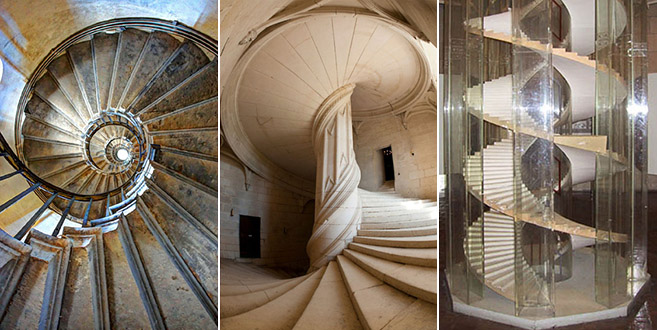Hey folks,
I had a great time yesterday attending an introductory permaculture workshop here in BC (Bowen Island to be specific), where we explored healthy soil building and mycology (soil food web).
It was a little less hands on than I had expected, but a very educational process of gathering like-minded souls together nonetheless, from all ages and backgrounds.
I even ended up getting some oyster mycelium plugs (Stamets style) which I’m excited about.
Overall though, this sort of workshop gives me hope, and faith, about where we are headed towards, where collaboration between artists, gardeners, farmers, scientists, academics, and everyone in-between can keep amplify the feedback loop towards regenerative culture.
There was a potluck where everyone brought their own food to share with others, and we visited some of the participants gardens; did some group activities to figure out what/how to improve landscapes using permaculture principles, including observing the contextual system situated.
Though I have some notes, I’ll share here some the pdfs that were sent to us afterwards to recap.
It contains some basic permaculture principles (zones and sectors when designing).
We touched a bit on biodynamic agriculture, especially related to a few wild flowers that are benefitial for health and soil, like yarrow, dandelions, comfrey, chamomile, etc. Those are wild varieties that can easily be found in a wild patch of grass so it blew my mind away. (Check the pdf titled “2017 Soil” for details). They are great for medicinal teas, or even to boost the composting process.
Below is also a link to resources shared by our organizer, Kym Chi, with valuable links to websites, local organizations and books. Especially if you’re in the Pacific Northwest area.
I loved that it was by donation, and once again, this synergistic energy where we all collaborate with all our varied personalities.
Resources link by Kym Chi:
https://docs.google.com/document/d/1bCo-HbTu628AjrV17Czg82maQ_0d0fhSl7k91XfL8-0/mobilebasic
PDF Docs & Permaculture notes:
https://mega.nz/#F!SsgzDS5J!bb1p9gXpIb7EqhFXqRY_aw
So I built my vortexer, I made a video, but it's a bit big to put up here....not sure the beast way to share it. any suggestions?
Anyhow, once I gathered the materials, it was very easy to make. The best thing about it is that the vortex is about 60 cm deep, and it maintains the vortex even once the pump is off. Next step is to get a little timer so it runs 1 min on, 2 mins off, but the vortex is still going. beautiful.
rani wrote: So I built my vortexer, I made a video, but it's a bit big to put up here....not sure the beast way to share it. any suggestions?
Anyhow, once I gathered the materials, it was very easy to make. The best thing about it is that the vortex is about 60 cm deep, and it maintains the vortex even once the pump is off. Next step is to get a little timer so it runs 1 min on, 2 mins off, but the vortex is still going. beautiful.
Congrats Rani, that’s dope!!
Youtube, Vimeo, Bitchute.. first two would be my choice for uploading content.
My lil vortexer. See how beautifully it runs without any power.
While I've been playing with it I noticed the interplay between the vortex and sound. I'm going to do some experiments with my tuning forks... But it made me think. The pyramids have resonance chambers at their heart, and there is kirilian photography to show that it also produces what looks like a vortex or birkeland current (are they manifestations of the same thing?) Made me wonder if there is a connection there too, between the sound and the energy vortex...
rani wrote: My lil vortexer. See how beautifully it runs without any power.
While I've been playing with it I noticed the interplay between the vortex and sound. I'm going to do some experiments with my tuning forks... But it made me think. The pyramids have resonance chambers at their heart, and there is kirilian photography to show that it also produces what looks like a vortex or birkeland current (are they manifestations of the same thing?) Made me wonder if there is a connection there too, between the sound and the energy vortex...
Sweeet!
Well done Rani, that vortexer looks awesome what are/will you be using the water for if I may ask?
As for sound, that’s intriguing as well.
I’m sure you’ll uncover many hidden insights no doubt:rolleyes:
Edit: I just realized your artwork doesn’t seem to require external power.
Does that mean that as the water spirals down, it creates enough force to propulse itself up again?
Very cool stuff
rani wrote: My lil vortexer. See how beautifully it runs without any power.
While I've been playing with it I noticed the interplay between the vortex and sound. I'm going to do some experiments with my tuning forks... But it made me think. The pyramids have resonance chambers at their heart, and there is kirilian photography to show that it also produces what looks like a vortex or birkeland current (are they manifestations of the same thing?) Made me wonder if there is a connection there too, between the sound and the energy vortex...
I see a vortex in a bucket and some inlet piping that doesn't seem to be active. I'm not sure how it is configured aside from that, do you care to provide some more details?
Ah yeah, sorry you guys, bit misleading I guess : )...
The whole set up is two buckets, a bilge pump and a battery I pulled out of my lawn mower.
The inlet is powered by the pump in the bottom bucket. I noticed that because the outlet in the top bucket was a wee bit smaller that the inlet, the bucket was going to overflow. I switched off the power and waited for it to drain so I could drill a bigger hole. The vortex didn't collapse, it just kept running with no water flowing in. So, rather than drilling a bigger hole and running it constantly I decided instead it would be much more efficient to get a timer to run the pump one minute on / two minutes off so I can maintain the vortex without draining the battery.
Just waiting for my little programmable timer to arrive, and I'm set.
The set up is for brewing compost tea to douse the biochar in. There is a lot of chat back and forth whether you really need to aerate the tea at all, some people say it produces more microbes than can survive in the soil once it's applied. I decided to build the vortexer any way because it looked like a fun project and eventually I also want to build an aquaponics system and this seemed like a useful step in the set up.
You should use a 12V PWM circuit to control the motor, something similar to this in line with the power supply:
https://www.amazon.com/Controller-DROK-Regulator-Governor-Modulator/dp/B00DVGGWC0/ref=pd_day0_hl_23_2/142-9287658-2873244?_encoding=UTF8&pd_rd_i=B00DVGGWC0&pd_rd_r=2335beef-b7f2-4b0e-bd8c-1bf0211c6b4f&pd_rd_w=FkOhb&pd_rd_wg=R1q7m&pf_rd_p=ad07871c-e646-4161-82c7-5ed0d4c85b07&pf_rd_r=HMBRQG02ZRB01R1ZTRXY&psc=1&refRID=HMBRQG02ZRB01R1ZTRXY
Ah, I bought a little programmable timer off ebay, it's got 16 cycles per day, so I'm hoping that's enough to do a brew.
The one you posted on amazon like a flow controller? I'm looking more for an on / off timer so I'm not running it for a full 12 hours.
The highest resolution programmable timers do go down to cycle times low enough, but do not have enough program space to make the system constantly circulate. A mechanical timer would be able to go all day, but only has 15 minute increments. A speed controller will allow you to dial the flow to the correct rate and constantly circulate until you turn it off. You will need to wire it inline with the power supply.
Super excited about some of the local discoveries and connections I’ve made in the past few days.
I visited Fruittuin van West/Pluk Amsterdam, a local food orchard and CSA (community-supported-agriculture) that practices organic and regenerative agriculture, with a mixture of agro-forestry, permaculture, soil buildingx free-range hen/roosters in the field and other cool stuff. It even features a compost lab, including something they call a Biomeiler.
I’d never heard of it before, but from what I undedstand, its basically a huge compost, sitting on top of a metal coil, and when the compost ferments and produces heat, its passed thru the coil to heat-up buildings and dwellings using floor-heating. Pretty neat stuff.
https://www.youtube.com/watch?v=QhR20RsgpPE
I knew I’d fallen in love when they had an outdoor toilet where they encourage people to leave behind their waste (humanure). Apparently the owner is an eccentric type that loves to collect weird things, and he has this awesome water tower with a funnel going down.
My initial impulse was that he must know about vortexed water! Unsurprisingly, the “weeds” growing underneath seemed lovely and lush (all that Life-Magnetism endowed thru charged water!).
Not to mention, all the fields are covered in green (with clover; grasses) as well chicken running freely all around. At the end of their lives, they are slaughtered and sold on the market.
I think you can’t ask for a better life.
It’s one big ecosystem working synergistically.
Long story short, met some people there and will be attending some workshops over the weekend (first one is on clay-house building; kinda like an Earth-ship but much smaller), and eventually would love to volunteer with them.
I’ve also joined another local group that takes surplus food from local groceries that would otherwise go to waste, and they then organize and prepare meal gatherings with a different bunch of people/events.
I couldn’t believe how much food the couple groceries were giveing us, for free, stuff like avocados, cantaloupes, ginger, cucumbers, lettuces, pumpkins. These aren’t usually cheap at the store either.
Couldn’t help but think that there’s such a growing need for initiatives like this to share the bounty with.
It’s also a great way to meet people, and develop networks. All about resilient communities, right?
While I don’t get paid for any of those things, I know it makes me happy and gives me satisfaction doing it. Eventually of course, I’ll need to find those greenbacks. And from what I hear, it ain't easy to find paying jobs doing this sort of thing. But I’m keeping my faith that something good will manifest out of.
This is also in great synchronicity with the last two THC episodes. First one was the documentary called Biggest Little Farm I first heard on Dana Cohen's show, which happened to be screened at the farm (didn't get to see it but I'll get to it for sure).
Also, couple days ago, I’ve found a beautiful, unpolished quartz on the street, and picked it up not thinking twice about it. Then I heard Ben Ras’ thing about crystals and felt a huge tingling in my body. Like whaaat. Sheet, maybe it was guiding me all along! (Should probably give her a polishing at some point)
Anyways, life is a mystery and it’s throwing me bones I’d never expect.
I owe much gratitude to Greg and to y’all as well for being bearers of insights.
So Namaste Everyone 🙂
shamangineer wrote: The highest resolution programmable timers do go down to cycle times low enough, but do not have enough program space to make the system constantly circulate. A mechanical timer would be able to go all day, but only has 15 minute increments. A speed controller will allow you to dial the flow to the correct rate and constantly circulate until you turn it off. You will need to wire it inline with the power supply.
Yeah, all true, but I'm off grid and I need to watch my power consumption, especially in winter. I thought being able to run it on / off would save me from having to charge the battery as much. If is doesn't work, I think I'll just drill a bigger hole in the top bucket to match the input rate, then I shouldn't need the flow controller.
enjoypolo wrote: Super excited about some of the local discoveries and connections I’ve made in the past few days.
Good on you EP! I love your energy! We use those Biomeliers over here to heat the showers at the permaculture cons. They are amazing.
Hey All,
I finished reading through Gunter Pauli's book called Plan A: Transforming Argentina's Economy, and the many insights contained in it are incredible. While the context is set in Argentina, with the co-operation of the local Minister of Environment and Sustainable Development Sergio Bergman, it's based on past-and-present projects that have succeeded worldwide.
Some of the book's highlight are:
1. Increasing of protein production through fly larvae fed on waste from slaughterhouses and industrial food waste (processing plants). Those maggots are such voracious eaters, and so rich in fats and minerals, they make excellent feed for animals, incl. fish.
2. P.76: Prof. George Chan's project in Fiji, Integrated Biosystems, is a beautiful, circular system that provides abundance of food and bio-gas energy production at the same time. The project's goal was part of making the island self-sustainable, and less reliant on its imports.
The fist change was deepening the existing shallow ponds from 1-to-2-feet by digging, and using the excavated earth to building dyke around it (10' total). There were able to have 7 types of fish each living at its own levels of depth.
The fish feed came from a local mushroom farm that used a nearby brewery's grain waste. While the pigs next-door were fed the mushroom substrate (leftover soil from mushroom harvest, enriched in mycelium). The pigs, who were potty-trained to poop outside in the morning, and thereby saving lots of work, would have their poo drop in the digester.
The slurry from the digester would mineralize the micro-algae ponds, like the betacarontene-rich spiruralina. The water full of mminerals becomes ideal for micro-organisms like phyto/zoo-planktons ideal for fish feed.
It goes on and on, with even better examples. Algae are a particularly fascinating one, because of how easy they are to grow, not to mention the ability to grow vertically, on a small plot of water (Ocean's Skyscrapers!). One thing that's intrigued me lately, is how seaweed could/would be farmed in cities with access to salt-water, maybe even in areas like the canals of Amsterdam (or any area on the coasts).
The book's third part has a whole chapter dedicated to growing algae for its multiple cascading benefits biogas production (and energy resilience), not to mention as a food, natural fertilizer, cosmetics and nutritional supplements, etc.
After following some threads in the book, I came across examples like Energaia, an urban farm producing spirulina in on rooftops in downtown Bangkok, Thailand.
Also came across this company office in Tokyo, acts as an urban farm that makes its own rice/vegetables/fruits for its canteen.
https://www.youtube.com/watch?v=qJMZRIRkZWs
Or the case of Lufa Farms in Montreal, started by Mohammed Hage (Rooftop urban farming)
Some other great cases found elsewhere
TheBlueEconomy.org :
104 - Clustering Urban Farming, Climate Change and Real Estate
GreenWave: 3D Sea-Farming
https://www.greenwave.org
:eek:I visited the Artis Micropia in Ams today, allegedly the World’s only museum dedicated to microbial life. What a delight, and inspiration. Peeking at the different types of bacteria, microbes, fungi, algaes with a an electronic microscope was the closest thing to venturing the Cosmos.
Talk about As Above So Below.
Here are some pictures my partner in crime snapped below. My favourite is the TR3B look-alike, incredible, isn’t it? Notice also those perfectly hexagonal chains:eek::rolleyes:. Not to mention all those coils and spirals.
The timing of it couldn’t have been better, since I just received an internship offer to be a compost master at an artsy-sciency gallery. It’s an exciting challenge to take on, and hopefully one that will open new doors.
One love y’all.
First day on the job, I had a look at the compost bin. Very unorganized and mostly just organic materials shoved in (no layering).
Next to it, around 5 Bokashi bins with lids. I opened them, and the stench of rotting materials was palpable, and infested with larvaes.
Next to it still, two buckets filled with darkened water. Some compost tea? Although it looked as though abandoned, with mosquito larvae blooming. As I took some notes, saw a few rats dashing around next to my feet.
I went home pondering about how to control the larvae infestation. And then a realization hit me: Instead of killing those voracious decomposers, BSF larvae (you can recognize they armored-shell, like a sowbug), why not farming them separately, while using them as fresh feed for the aquaponics fish?
After nerding out researching on this (In fact I'd already spent many hours on the past on the subject), it looks pretty easy to make that. Case in point, the larvae production is already present, I just need to find a way to harvest them.
Current plan of action is to transform one of the bins into a full-time BSF production plant, with a simple mechanism to harvest them.
The fact that I have at my disposition, a constant waste-stream from the lab's restaurant kitchen, as well as water (it rains a lot here, not to mention we're right by the canal), means the only thing required is ideal heat to keep them warm and productive (Challenge A for freezing outdoors winter). As for the construction, I am planning on applying the technique below, to the bin.
https://www.youtube.com/watch?v=SbzedftrQJw
The incredible thing, as you can notice, is that once the larvae have grown from eating, they reach the stage where they look for soil to metamorphose into the black soldier fly. This is why a ramp is built, like a factory-production line, leads them straight out, and into a container for collection.
Getting rich protein-feeds never looked so easy.
In my classic fantasy style, I was dreaming up of ways to build such a ramp without damaging the bin (would rather avoid since its not my equipment per se). Inspired by Da Vinci's spiraling staircase, I'm thinking of center pillar, around which coils a double-helix staircases that go up top, with each staircase guiding the prepupates into a container for harvesting (avoiding getting too dirty dumpster diving in the bins).
Of course, I have no idea how I will achieve that, but where there's a will, there is a way, right? Solution B would be to glue ramps along the walls diagonally, until the top. But again, I'd like to reduce glueing/tampering with the bins; whereas a central column would simply needed to be placed in the middle)

the same type of bins we use

Spiraling staircase in the centre of the bin (idea: bamboo stick standing with cardboard spirals?)
More importantly, I'm gonna have to pitch this to my colleagues to get approval first. There are still a few hurdles to get around, like how to keep them warm in an outdoor environment (thinking of having the bins touching the compost pile to get it warm; or potentially a tiny biomeiler type. Or even putting the BSF bin in the middle of the compost pile (so that it always gets the heat around it).
Also, while BSF are gentle flies (unlike the pestilent house flies), I wonder if rodents would be causing trouble.
Seems to me though, as a great way to:
1) turning waste into protein feed (in this case, for the african catfish living in the aquaponics system)
2) Decomposing food into stable micro-organisms, making rich compost left behind
3) The result, at least in theory, should a) reduce costs for buying organic fish feed; b) make rich compost for the garden beds; c) an educational opportunity to learn/teach close-loop cycles.
Another one of my over-ambitious plans/fantasies, is an algae water-remediation system, inspired by John Todd's Eco Machines. The book, Healing Earth, is tremendously inspiring. But I don't want to put the cart before the horse, if you know what I mean. One step at a time.
- 44 Forums
- 3,506 Topics
- 15.8 K Posts
- 5 Online
- 22.4 K Members






